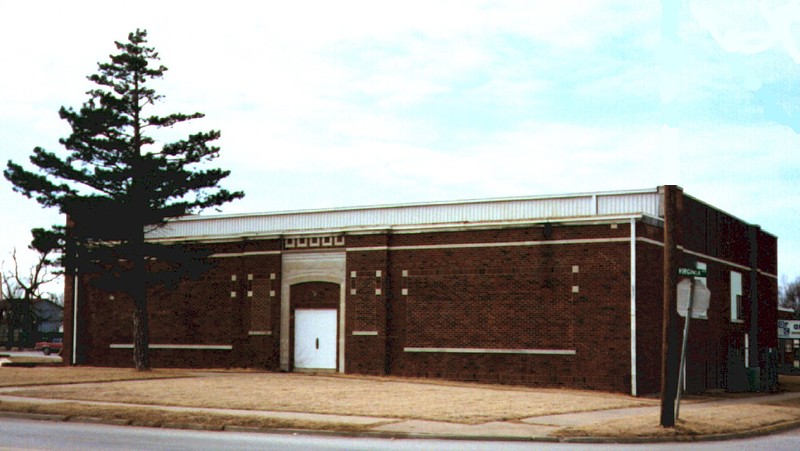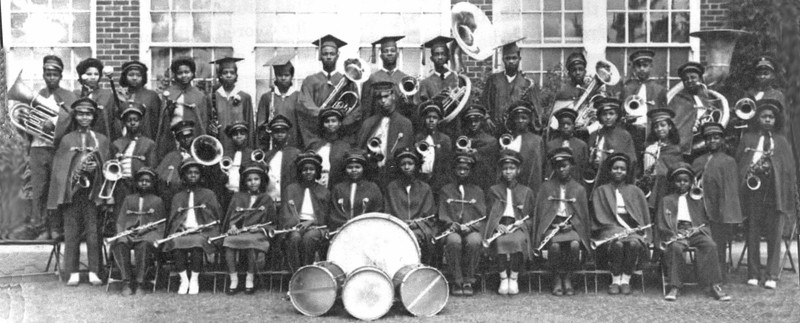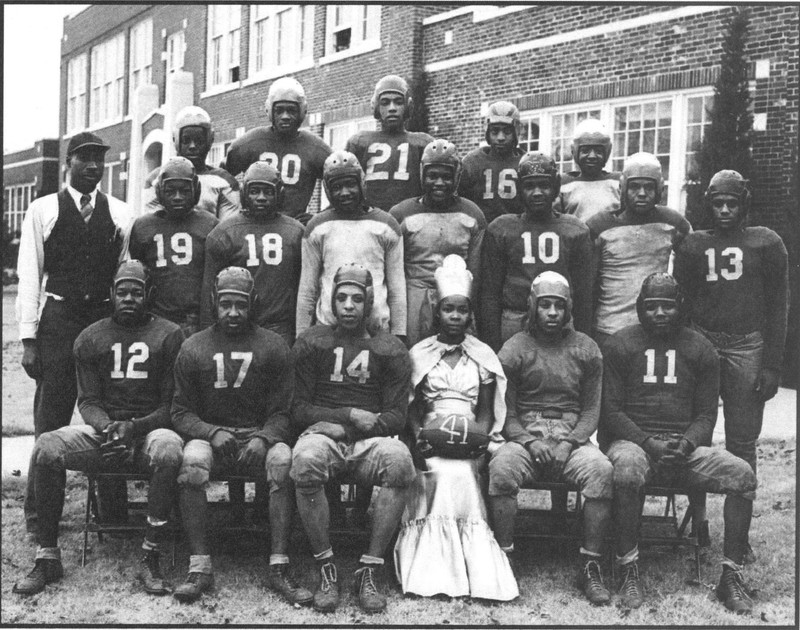Douglass School (1907-1971)
Introduction
Text-to-speech Audio
Established in 1907, Douglass School served as the official public school for the children of Bartlesville’s Black community. During the time of Jim Crow segregation, which existed in Oklahoma just as it did across the United States, schools in Bartlesville were separated by race. Founded in the same year as Oklahoma’s statehood, Douglass provided an essential function to African American residents of the Bartlesville area and would serve as the single, publicly funded Black school in the city for nearly fifty years. The Bartlesville School District was desegregated in 1956, two years after the landmark Brown v. Board of Education of Topeka, Kansas decision, which ordered schools across the country to end segregation. Douglass School continued to operate until 1971, and the building was utilized for a variety of purposes in the years that followed. In 2012, the remnants of its gymnasium, the last remaining portion of the building, was razed.
Images
Douglass School was opened in 1907 and moved to its permanent location at Fifth and Virginia in 1912.

Douglass served as Bartlesville's public school for African American children until 1956, when the Bartlesville School District desegregated the school system.

The High Steppers, Douglass School's student band.

The Douglass Dragons football team along with the school's homecoming queen.

Backstory and Context
Text-to-speech Audio
The Douglass School was founded in 1907 to help educate Bartlesville’s young African American population. The school was founded with seven students being taught by Revered George Walls at the old Methodist Church Building on Watson Avenue. By 1910, Miss Luvenia Brown from Emporia State Teachers College joined the faculty, and classes were moved to a nearby store called Perry’s. Soon after this move, a fire consumed the school site, prompting another move to a one-room stucco building at Fifth and Virginia in 1912. Douglass continued to grow over the next fifteen years, with four rooms built onto the school in 1924 and a domestic science and auto shop building added in 1927 at a separate facility at Seventh and Oak. Enrollment also increased during this period, as the school, which was previously only for elementary-aged children, opened its doors to middle school and later high school-aged students.
Before Douglass, various facilities around the community opened their doors to Bartlesville’s African American children. They met at small churches and schools like Daniels, Dunbar, and Martin and were taught by parents and preachers. This community support continued after the establishment of a formal public school. The Renaissance Club, a local Black women’s club provided aid to the school in the form of a nursery and other services. The Douglass Parent Teachers Association (PTA) was also founded in 1938, pushing for a bond that year to set aside 0.55 acres for a gymnasium, auditorium, and classroom addition costing $28,135. Two years later, the PTA again led the charge for the school’s advancement, raising funds for the building of a lunchroom.
Douglass School also featured successful sports team and student clubs. The High Steppers, the school’s marching band, led the homecoming parade through downtown Bartlesville, playing the school song, “The Eyes of Douglass”. Douglass also had active speech and debate clubs, a student council, a journalism class, and a glee club known as the Douglassaires. The school was represented in football, basketball, and track by the Dragons, who sported the school’s official colors, purple and white. During the 1955-56 football season, under the guidance of coach Charles “Cool City” Smith, the team made history and finished the season undefeated. Hoping to crown a true state champion, Douglass made plans to play Frederick’s Boyd High School, the only other undefeated team in the state. However, the Bartlesville Board of Education refused to pay for the trip to Frederick, resulting in the schools being named co-champions.
Douglass became one of the foundations of Bartlesville’s West Side, which evolved into a one-stop shop for the town’s Black residents during the early decades of the 1900s. The West Side featured businesses such as retail shops, laundry mats, lawn workers, and cab companies that provided crucial services to the community. Residents could also get their haircut at Irene’s Beauty Box or Manning’s Barber Shop, eat at The Golden Pumpkin or Skeeta Jones’ Restaurant, and spend their night at Night Tracks or Brown’s Pool Hall. As in many other cities around the country, Bartlesville’s African Americans created a self-sustaining neighborhood where businesses and community organizations thrived, and Black residents could avoid some elements of Jim Crow-era segregation.
In 1949, Douglass reached its peak, graduating 24 students, the largest class in its history. As the Bartlesville School District began desegregation, Douglass shrunk its class sizes and enrollment offerings seven years later. It was first reduced to eight grades, then to six, and finally to just kindergarten through third grade before closing in 1971. Although the school no longer exists, its memory lives on in Bartlesville’s West Side and among former students, exemplified by the all-school reunion that has occurred every three years since 1976.
Sources
Douglass, Bartlesville Public Schools. Accessed May 1st 2022. https://bartlesvillepsok.sites.thrillshare.com/page/douglass.
"Douglass Heritage Continues." Examiner-Enterprise (Bartlesville) July 26th 2015.
Wilt, Mike. Bartlesville's Own West Side Story. b Monthly. February 1st 2019. 22 - 27. .
Bartlesville Public Schools
Bartlesville Public Schools
Bartlesville Public Schools
Bartlesville Public Schools
